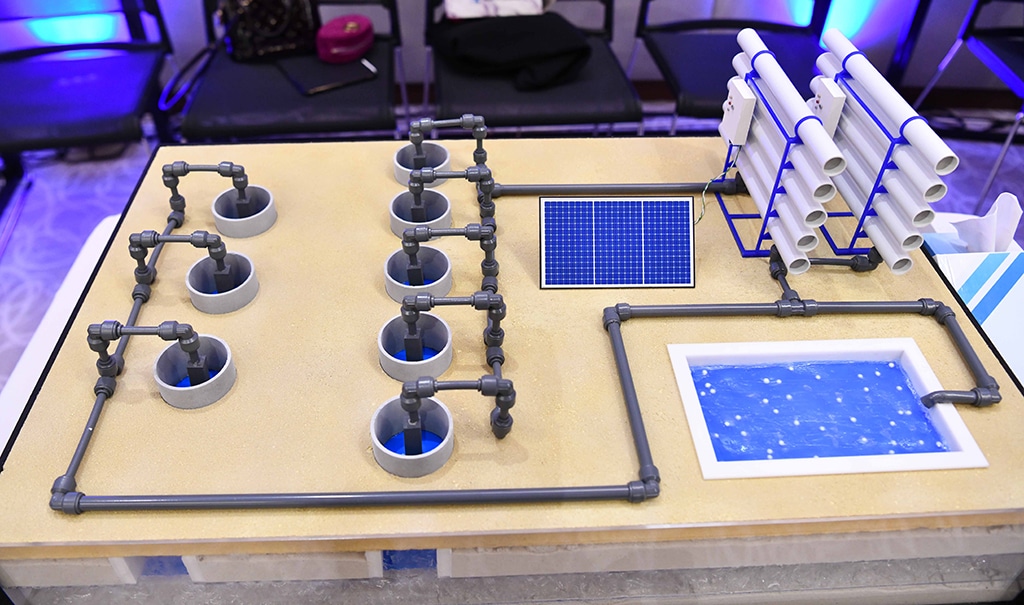KUWAIT: After years of accumulating knowledge, honing skillsets and sharpening creative capabilities, efforts of Engineering Students at Kuwait University culminate in a final project proudly displayed at the Engineering Design Exhibition. Students enrolled in the engineering design module examine the world around them and provide creative and practical solutions to societal issues.
Around 296 students presented 78 innovative projects at the exhibition's 43rd edition, hosted at Sabah Al-Salem University City on January 9. Electrical engineering students Dana and Rabaa Al-Mutairi shared a deep concern for the growing number of road accidents endangering the lives of motorcycle drivers, and the two took it upon themselves to devise an effective way to better protect road-goers. After much deliberation, Dana and Rabaa created a lightweight piece equipped with lights and warning notifications and which could be attached to the drivers' helmets.
The piece, Dana explained, "Measures distance between the motorcyclist and other approaching vehicles and sounds a warning to the driver in case of closing distance," Rabaa went on to add that driver is also able to use the piece to pinpoint his location and send it to concerned authorities in case of an emergency. Dana and Rabaa came up with a low cost, effective and easily operated device that could potentially save lives. As for chemical engineering students Hasan Ali, Mane Al-Randi, Sarah Al-Sayegh and Fatima Dashti, they racked their brains trying to arrive at an idea for their final project.
 Produce and export acetone.
Produce and export acetone.The group soon realized that the Middle East region is completely devoid of an acetone-manufacturing factory, a multi-purpose chemical compound used in detergents, cosmetics, and relied upon by many industries. The four agreed to work towards the first acetone-manufacturing factory in the area and used this idea as the blueprint for their project. A group of civil engineering students, of the environmental engineering discipline, was set upon finding solutions for Kuwait's environmental issues.
One student relayed to her collaborators that Qaruh Island, the farthest from Kuwait's shores, has been suffering from environmental issues eating away at it for the past 20 years. She told them that the island, once home to vibrant coral reefs, lost much of its sea life and its size due to the deterioration of the marine environment around it. The group of five designed a project restoring life to the withering island with a concrete structure surrounding it.
The structure will help regrow coral reefs, explained the students, adding that rehabilitating Qaruh will require around 1,500 concrete domes. Each concrete dome is 71 centimeters high, with a 73 cm diameter, and is comprised of cement and fly ash, an eco-friendly substance. The first stage of the project establishes a factory to cover Qaruh's need of the concrete domes, and then expands to export such domes to countries suffering from the very same conundrum. These exhibited projects are a testament to students' innovative capabilities, and are a step closer to the future ahead. - KUNA











